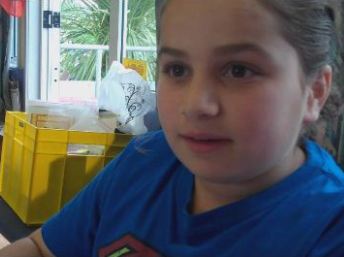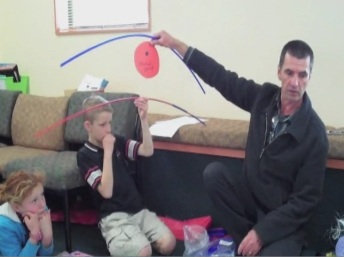|
Effective teachers carefully select tools and representations to provide support for students’ thinking. |
The stories below highlight the variety of tools available to teachers, including the number system itself, symbols, diagrams, models, notation, stories, technologies and a range of ‘concrete’ materials. They discuss the importance of tools in assisting their students to make connections between operations, concepts and their symbolic representations. They show that tools must be carefully selected and that teachers should ensure that connections between concepts and representations are explicit, linking the model to the key focus ideas. This requires sound knowledge by the teacher if misuse of tools is to be avoided and if deeper mathematical understanding is to be developed.
Appropriate tools and skillful teacher guidance should support students in their discussion of their ideas, and in their recording of these. This communication of their ideas is critical for students in their own learning process but it also provides essential insights for teachers into the students’ thinking and into any misconceptions. In scaffolding learning using a variety of tools, including an increasing array of technologies, teachers make learning accessible, support independent enquiry and make links with the students’ real world.
It is evident in some of the stories below that the use of particular tools led to some real teacher insights.
Exemplars:
|
They could recognise some patterns on a dice but did not understand what they meant. I therefore worked on moving the students onto patterning and to seeing patterns in a lot of different ways. I used a variety of materials and representations so the students could model, explain and justify their thinking in a multitude of ways.
(St Mary's School)
|
|
The selection of appropriate tools and representations to provide support for students’ thinking was essential in assisting them to make connections between mathematical ideas.
‘With the help of an appropriate tool, students can think through a problem or test an idea that their teacher has modelled’ (Anthony, G. & Walshaw, M., 2009, p.23)
Students needed the opportunity to explore a range of materials to make sense of the mathematical ideas. We found that we could not rely on one piece of equipment to model the idea but had to use several different pieces to ensure that learning had been met. For year 3 students we used a range of representations of arrays linked to a story context. Year 5 children physically represented arrays using a range of materials such as sports equipment. This allowed children the opportunity to make connections between the representations and the mathematical concepts and ideas. To support this idea it was essential also for the children to see the connection between the symbols and the representation. It was important to provide children with adequate scaffolding of mathematical concepts in order for them to succeed.
(Waterloo School)
|
|
Equipment was a significant component of my trial. Concepts being developed were explored with materials to consolidate understanding. Examples of this included:
Fly flips, beans, unifix cubes – derived multiplication Pop sticks, place value houses, beans, number lines, arrow cards – place value knowledge Place value houses – place value knowledge Hundreds boards – place value knowledge, addition/subtraction facts Deci-pipes – decimal place value knowledge To consolidate multiplication facts, children were engaged in a number of ‘games’ such as loopy, family of facts trading game and many more.
(Palmerston North Intermediate)
|
| Materials were used daily to help the students to express their thinking and to solve the maths problems. Knowledge was built up with the help of tens frames, card games, dice, iceblock sticks, place value flip book, blocks and number cards. Most of these materials were also used to develop strategies, with the additional inclusion of laminated number lines and representations of number lines drawn by students in their books. The materials were essential for the students to visualise and represent what they were doing when solving the problems. By manipulating the materials, the students were able to mathematically prove their solutions and become totally involved with the strategies being taught. In addition, computers were used once a week to practice memory games, which the students found to be motivating.
(Royal Road School)
|
|
I used materials that linked words, digits and a physical representation. Read, Say, Do times two. For example, READ: the word twenty and digits 20 correctly. SAY: twenty as two lots of ten or twenty singles. DO: make two bundles of ten ice block sticks and twenty single ice block sticks.
(Ahipara School)
|
(Keith Street School)
|

